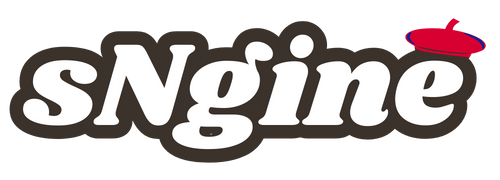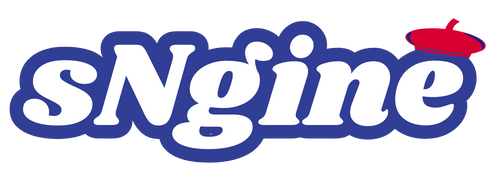Executive Summary Silk Market Research: Share and Size Intelligence
CAGR Value
The global silk market was valued at USD 16.05 billion in 2024 and is expected to reach USD 31.95 billion by 2032
During the forecast period of 2025 to 2032 the market is likely to grow at a CAGR of 9.1%, primarily driven by the rising consumer preference for sustainable and ethically sourced silk, including peace silk and organic silk
The large scale Silk Market report gives explanation about the different segments of the market analysis which is demanded by today’s businesses. The process of formulating this market report is initiated with the expert advice and the utilization of several steps. Market share analysis and key trend analysis are the major accomplishing factors of this winning market report. Evaluations of CAGR values, market drivers and market restraints aid businesses in deciding several strategies. Moreover, Silk Market research report also brings into the focus various strategies that have been used by other key players of the market or Silk Market industry.
All the statistics covered in the world class Silk Market report is represented in a proper way with the help of graphs, tables and charts which gives best user experience and understanding. Also, the reviews about key players, major collaborations, merger and acquisitions along with trending innovation and business policies are displayed in this market report. This market study also evaluates the market status, market share, growth rate, sales volume, future trends, market drivers, market restraints, revenue generation, opportunities and challenges, risks and entry barriers, sales channels, and distributors. Silk Market research report is sure to help businesses in making informed and better decisions thereby managing Market of goods and services.
Find out what’s next for the Silk Market with exclusive insights and opportunities. Download full report:
https://www.databridgemarketresearch.com/reports/global-silk-market
Silk Market Dynamics
**Segments**
- **Type:** The global silk market can be segmented based on the type of silk, including mulberry silk, tussar silk, eri silk, and muga silk. Mulberry silk is the most common type of silk produced globally, known for its quality and durability. Tussar silk, also known as wild silk, is valued for its natural gold color and texture. Eri silk, also called peace silk, is known for its eco-friendly production process. Muga silk, exclusive to Assam in India, is considered a premium variety due to its natural golden color and durability.
- **Application:** The silk market can also be segmented based on its applications, including textiles, cosmetics, medical, and others. In textiles, silk is widely used in apparel, home furnishings, and accessories due to its softness and luster. Silk is also used in the cosmetics industry for skincare and haircare products due to its moisturizing and anti-aging properties. In the medical field, silk is utilized for sutures and tissue engineering due to its biocompatibility and strength.
- **Region:** Geographically, the global silk market can be segmented into North America, Europe, Asia-Pacific, Latin America, and Middle East & Africa. Asia-Pacific dominates the silk market due to the presence of major silk-producing countries like China, India, and Vietnam. Europe and North America are significant markets for silk products due to the high demand for luxury textiles and cosmetics.
**Market Players**
- **Anhui Silk Co., Ltd:** Anhui Silk Co., Ltd is a leading player in the global silk market, specializing in the production of mulberry silk and silk textiles. The company is known for its high-quality silk products and sustainable practices.
- **Wujiang First Textile Co., Ltd:** Wujiang First Textile Co., Ltd is a key player in the silk market, offering a wide range of silk fabrics for apparel and home furnishings. The company focuses on innovation and design to meet the evolving needs of consumers.
- **Bombyx mori:** Bombyx mori is a prominent supplier of silkworms and silk cocoons, essential for silk production. The company ensures the quality and purity of silk raw materials, contributing to the overall growth of the silk market.
- **Bolt Threads:** Bolt Threads is a leading biotechnology company that produces sustainable silk fibers using innovative technology. The company's synthetic silk offers an environmentally friendly alternative to traditional silk production methods.
The global silk market is poised for growth, driven by the increasing demand for luxury textiles, eco-friendly products, and innovative applications of silk. With key players focusing on quality, sustainability, and innovation, the market is expected to witness significant development in the coming years.
The global silk market continues to witness dynamic trends and developments that are shaping the industry landscape. One notable trend is the increasing focus on sustainable and eco-friendly silk production practices across the value chain. Consumers are becoming more conscious of the environmental impact of their purchasing decisions, leading to a growing demand for ethically sourced silk products. This shift towards sustainability is driving market players to adopt eco-friendly production techniques, such as organic farming methods and reduced chemical usage, to cater to this evolving consumer preference.
Another significant trend in the silk market is the rise of innovative applications for silk beyond traditional textiles. With ongoing advancements in biotechnology and material science, silk is being explored for various new applications, such as medical implants, bioengineering, and even as a sustainable alternative to conventional plastics. These innovative uses of silk highlight the versatile nature of this natural fiber and open up new opportunities for market players to diversify their product offerings and tap into niche markets.
Furthermore, the growing influence of digital technologies and e-commerce platforms is reshaping the distribution and marketing channels in the silk market. Online retail has become a prominent avenue for silk manufacturers and retailers to reach a global consumer base, enabling them to showcase their products, engage with customers, and drive sales more efficiently. Leveraging digital tools such as social media marketing and virtual showrooms has become imperative for market players to stay competitive in the increasingly digitalized marketplace.
Additionally, the COVID-19 pandemic has had a mixed impact on the global silk market. While the initial disruptions in the supply chain and manufacturing operations posed challenges for industry players, the rise in remote work and virtual events has created new opportunities for silk products, particularly in the luxury home decor and loungewear segments. As the world gradually recovers from the pandemic, the silk market is expected to rebound stronger, driven by pent-up demand, changing consumer preferences, and a renewed focus on quality and sustainability.
In conclusion, the global silk market is undergoing a period of transformation characterized by sustainability, innovation, digitalization, and resilience. Market players that adapt to these evolving trends and embrace change are well-positioned to capitalize on the growing demand for silk products across diverse applications and geographies. By staying agile, customer-centric, and environmentally conscious, companies in the silk industry can not only navigate the current challenges but also thrive in the competitive marketplace of the future.The global silk market is witnessing a paradigm shift as consumer preferences veer towards sustainability, driving a surge in demand for ethically sourced and eco-friendly silk products. This transition is prompting market players to adopt environmentally conscious practices throughout the silk production process, from organic farming methods to reduced chemical usage. As a result, companies are reimagining their supply chains to align with this evolving consumer sentiment, thus reshaping the industry landscape.
Moreover, there is a notable trend towards exploring innovative applications for silk beyond traditional textiles, propelled by advancements in biotechnology and material science. Silk is now being earmarked for diverse uses such as medical implants, bioengineering, and eco-friendly alternatives to conventional plastics. This diversification underscores the versatility and adaptability of silk as a natural fiber, thereby offering new avenues for market players to expand their product portfolios and cater to niche markets.
The convergence of digital technologies and e-commerce platforms has also revolutionized distribution and marketing strategies in the silk market. Online retail has emerged as a pivotal channel for silk manufacturers and retailers to connect with a global consumer base, enabling them to showcase their offerings, engage with customers, and boost sales efficacy. In this digital age, leveraging tools like social media marketing and virtual showrooms has become a prerequisite for market players seeking to maintain a competitive edge in an increasingly digitalized marketplace.
Additionally, the COVID-19 pandemic has imparted both challenges and opportunities to the global silk market. While initial disruptions in the supply chain and manufacturing operations posed obstacles for industry stakeholders, the shift towards remote work and virtual events has spawned new market prospects, particularly in the luxury home decor and loungewear segments. As economies gradually recuperate from the pandemic's impact, the silk market is poised to rebound robustly on the back of pent-up demand, evolving consumer preferences, and a renewed emphasis on quality and sustainability.
In conclusion, the ongoing transformation in the global silk market underscores a landscape defined by sustainability, innovation, digitalization, and resilience. Market participants that successfully navigate these evolving trends and embrace change are in pole position to capitalize on the escalating demand for silk products across varied applications and regions. By fostering agility, customer-centricity, and environmental stewardship, companies operating in the silk industry can not only confront prevailing challenges but also thrive in an intensely competitive marketplace, characterized by ever-evolving consumer dynamics and industry trends.
Track the company’s evolving market share
https://www.databridgemarketresearch.com/reports/global-silk-market/companies
Master List of Market Research Questions – Silk Market Focus
- What is the size of the Silk Market based on the latest report?
- How is the market expected to grow annually?
- Which components make up the primary segmentation?
- Who are the most influential firms in the current landscape?
- What are some recent product or service launches?
- Which countries are covered in the scope of the Silk Market report?
- What region is demonstrating the highest Silk Market momentum?
- Which country will likely dominate future trends for Silk Market?
- Which area leads in terms of Silk Market occupancy?
- Which country holds the top position for CAGR?
Browse More Reports:
Asia-Pacific Automated Cell Cultures Market
Global Artificial Intelligence Market
Global Thermoplastic Polyurethane Market
North America Polyurethane Foam Market
Europe Aluminum Foil Market
Global Beta Carotene Market
Europe Automated Cell Cultures Market
Global Butadiene Market
Global Chlorella Market
Global Natural Gas Engine Market
North America Organic Pigments Market
Europe Dental Instruments Market
Global Glycosidases Market
Global Laser Safety Goggles Market
Global Halogen-Free Flame Retardant Market
Global Hypogammaglobulinemia Drugs Market
Global Achondrogenesis Market
Global Cold Season Turf Grass Market
Asia-Pacific Plasticized Polyvinyl Chloride (PVC) Compound Market
GCC Cyber Security Market
Global Powdered Seaweed Market
Global Smart Insulin Pen Market
Global Micro Perforated Films for Packaging Market
Middle East and Africa Colorants Market
Global Active Implantable Medical Devices Market
Global Polyolefin Catalyst Market
Global Motorcycle Market
Global Parathyroid Adenoma Market
About Data Bridge Market Research:
An absolute way to forecast what the future holds is to comprehend the trend today!
Data Bridge Market Research set forth itself as an unconventional and neoteric market research and consulting firm with an unparalleled level of resilience and integrated approaches. We are determined to unearth the best market opportunities and foster efficient information for your business to thrive in the market. Data Bridge endeavors to provide appropriate solutions to the complex business challenges and initiates an effortless decision-making process. Data Bridge is an aftermath of sheer wisdom and experience which was formulated and framed in the year 2015 in Pune.
Contact Us:
Data Bridge Market Research
US: +1 614 591 3140
UK: +44 845 154 9652
APAC : +653 1251 975
Email:- [email protected]


